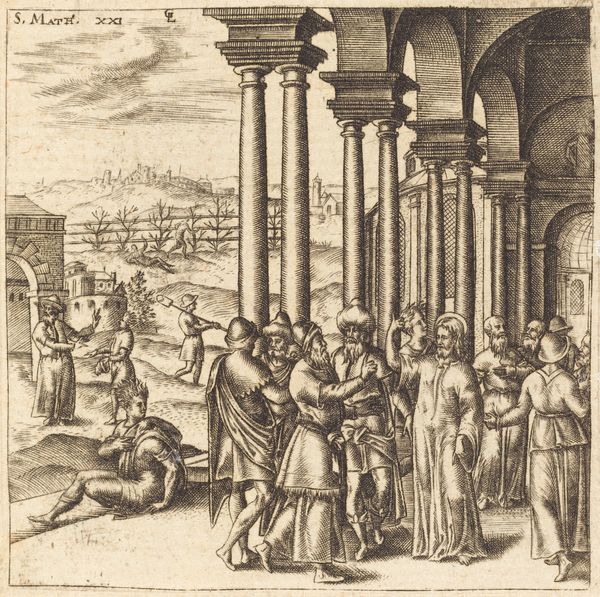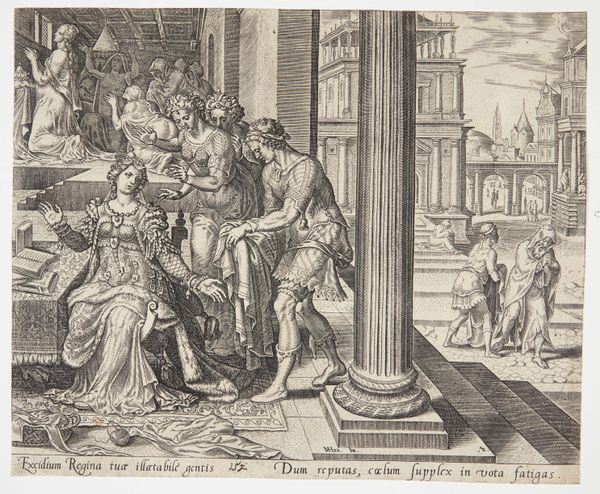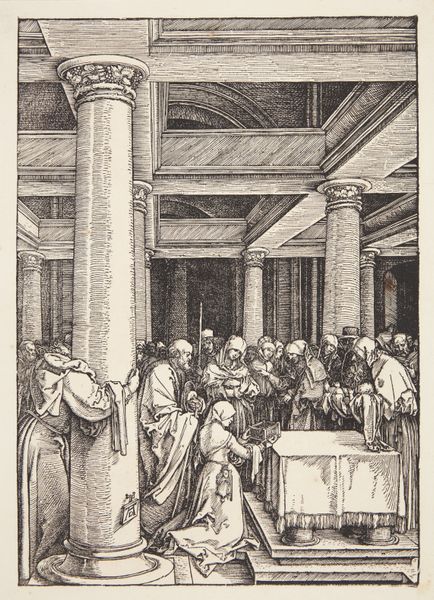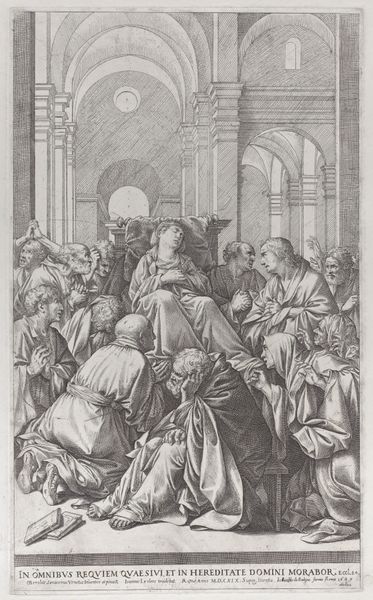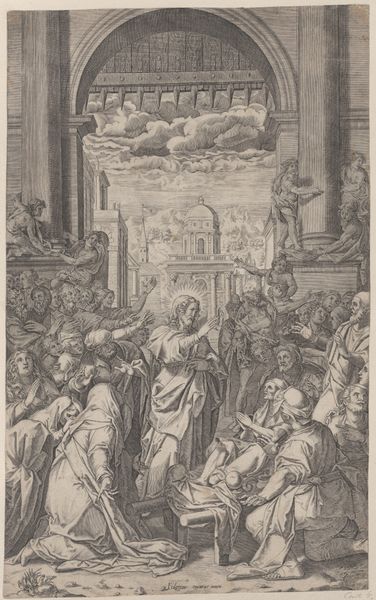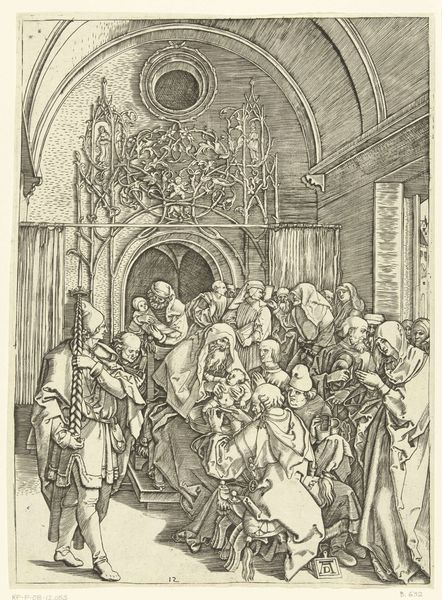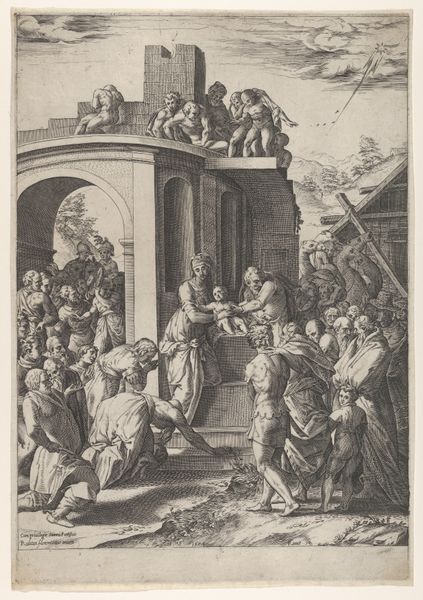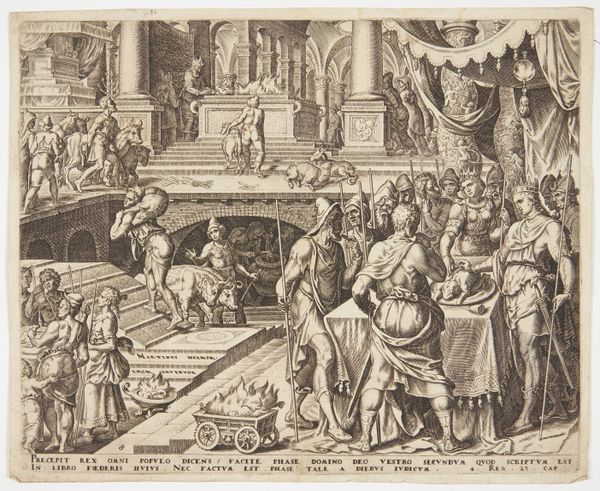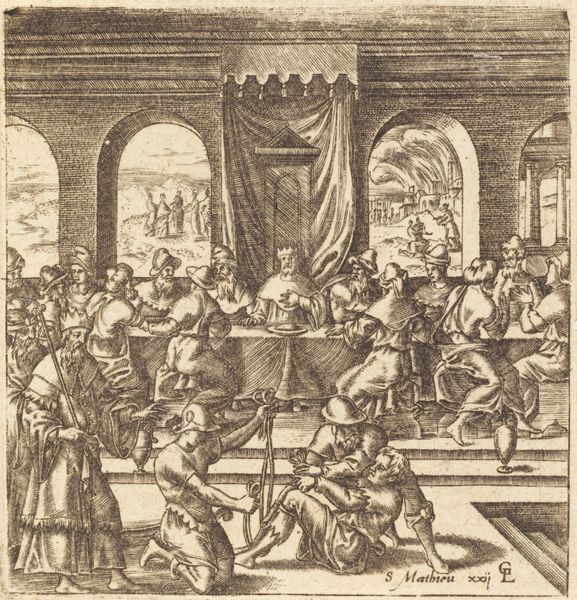
print, engraving
#
narrative-art
# print
#
history-painting
#
italian-renaissance
#
engraving
Copyright: National Gallery of Art: CC0 1.0
Curator: The density of line in this engraving immediately draws my attention—it’s practically teeming with visual texture. Editor: This is "Christ at the Feast of Tabernacles," an engraving by Léonard Gaultier, dating back to the late 16th century. Its a remarkable depiction of a pivotal biblical scene, rich with symbolism. Curator: Symbolism indeed! Look at how Gaultier uses architectural elements—the columns, the arches—to frame the central figures, almost placing them on a stage. It’s a conscious act of dramatic construction. Editor: The architecture signifies the Temple in Jerusalem, of course, but more deeply, the Feast itself was loaded with meaning. It commemorated the Israelites' wandering in the desert, the temporary shelters representing their reliance on God. Curator: Right, and Christ presenting himself during this feast… it’s a potent visual claim. The lighting is almost theatrical; see how it illuminates Christ's figure in contrast to those around him? Editor: Gaultier skillfully renders the emotional contrast between Jesus and his audience, suggesting the ambivalence and divisions that characterized his reception. Note, too, how some figures kneel while others remain standing with arms and weapons… The artist presents the full spectrum of belief and opposition. Curator: A spectrum visually encoded through body language and compositional arrangement. Also, observe how the artist leads your eye through the figures in a shallow field of depth. Editor: Absolutely, and it compels you to decipher each individual reaction within the gathering, the overall tension building as Christ makes his pronouncement. Even the distant figures exiting the temple are implicated as witnesses of this momentous scene. Curator: I'm struck again by how Gaultier utilizes the tools available through printmaking. All these tiny variations create depth. The cross hatching seems less about modeling light than constructing this kind of narrative energy. Editor: Agreed. Beyond a purely historical account, this image serves as a mirror, reflecting the viewer's own relationship to faith, authority, and truth. Curator: Thinking about Gaultier's approach—that dance between precision and passion—offers a fascinating portal into Renaissance image-making. Editor: Indeed, it leaves me reflecting on the potent capacity of art to not only illustrate, but to instigate introspective questioning.
Comments
No comments
Be the first to comment and join the conversation on the ultimate creative platform.
